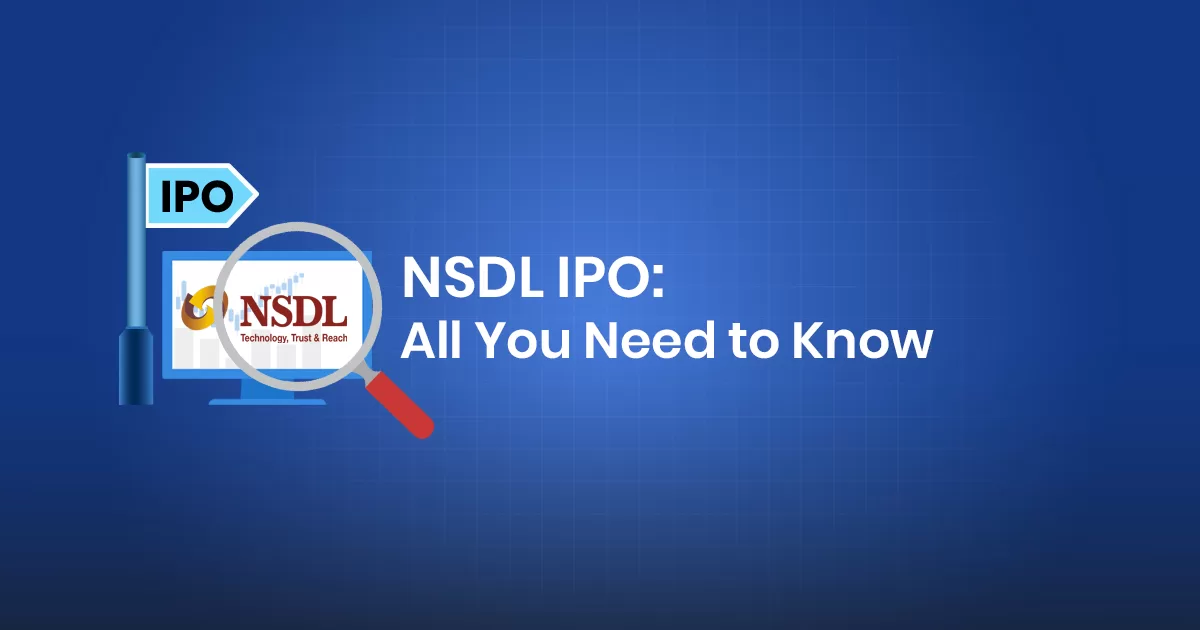The Initial Public Offering (IPO) of National Securities Depository Limited (NSDL) has garnered significant attention from retail and institutional investors alike. With India’s growing interest in capital markets, the NSDL IPO was seen as a strategic investment opportunity, not just because of the company’s financials, but also due to its crucial role in India’s financial ecosystem.
If you applied for the NSDL IPO and are waiting to find out whether you’ve received an allotment, this blog walks you through the allotment status, important timelines, and what you can expect going forward.
1. About NSDL: A Pillar of Indian Capital Markets
National Securities Depository Limited (NSDL) was established in 1996 as India’s first depository to facilitate the dematerialization of securities. It played a critical role in eliminating the need for physical share certificates, making transactions faster, more secure, and efficient.
Over the years, NSDL has built a vast infrastructure offering services like:
- Demat account management
- Settlement of trades
- Corporate actions (dividends, rights issues)
- E-voting services
- KYC services for mutual funds and intermediaries
NSDL currently manages over 3.3 crore investor accounts and holds assets worth over ₹330 lakh crore in dematerialized form. It services a wide range of stakeholders including investors, brokers, and custodians.
2. NSDL IPO: Quick Overview
IPO Details:
- IPO Open Dates: July 30 – August 1, 2025
- IPO Size: ₹4,011.6 crore
- Type: 100% Offer for Sale (OFS)
- Price Band: ₹760 – ₹800 per share
- Lot Size: 18 shares (minimum investment ~₹14,400)
Purpose of IPO:
Since the IPO was entirely an OFS, NSDL won’t receive any fresh capital. Instead, existing shareholders — including IDBI Bank, SBI, HDFC Bank, and NSE — are diluting part of their stake.
3. Subscription Status
The NSDL IPO saw overwhelming response:
- Retail Investor Category: Subscribed 3.1x
- QIB (Qualified Institutional Buyers): 6.9x
- NII (Non-Institutional Investors): 4.8x
- Overall Subscription: ~5.6x
Given the heavy demand, especially from QIBs and HNIs, allotment in the retail category is expected to be lottery-based, especially for single-lot applications.
4. NSDL IPO Allotment Date and Process
Important Dates:
- IPO Close Date: August 1, 2025
- Allotment Finalization: Likely by August 5, 2025
- Refunds Initiated: August 6, 2025
- Shares Credited to Demat: August 7, 2025
- Listing on Stock Exchanges: August 8, 2025 (Tentative)
Allotment Process:
Once the IPO closes, the registrar verifies all applications. Due to high oversubscription in the retail category, a computerized lottery system is used to ensure fairness. This means even if you applied correctly, there’s no guarantee of allotment.
If you applied for multiple lots and were eligible, your chances improve proportionally — but allotment still depends on overall demand.
5. How to Check NSDL IPO Allotment Status
Once allotments are finalized, you can check your status using any of the following methods:
A. Registrar’s Website (e.g., Link Intime or KFintech)
- Visit the IPO allotment status page on the registrar’s website.
- Choose “NSDL IPO” from the drop-down list.
- Enter any of the following:
- PAN Number
- Application Number
- Demat Account Number
- Click “Submit” to view your allotment result.
B. BSE Website
- Go to https://www.bseindia.com/investors/appli_check.aspx
- Select “Equity” and then “NSDL IPO”
- Enter your PAN and application number
- Submit the form to check your status
C. Through Your Broker
Many stock brokers like Zerodha, Groww, Upstox, and Angel One provide IPO allotment updates via their apps or email notifications. You can log into your account and go to the IPO section for updates.
6. What Happens After You Get Allotment?
If you’ve received shares:
- Shares will be credited to your Demat account on or before August 7, 2025
- You can view them under your holdings section on your broker’s app
- Shares will become tradable from the listing date, which is likely to be August 8, 2025
You can either:
- Hold the shares for long-term investment, or
- Sell them on listing day if there is a listing gain
7. What If You Don’t Get Allotment?
If your name isn’t on the allotment list:
- The refund process begins automatically
- If you used UPI, your blocked amount will be unblocked within 2–3 days
- If you used net banking/ASBA, funds will be released directly to your account
You can then use this money to apply for upcoming IPOs or invest elsewhere.
8. Expected Listing Gains
As of the latest reports, the grey market premium (GMP) for NSDL shares is around ₹130–₹150, which means listing could happen around ₹930–₹950 per share — a 16–18% premium over the issue price.
However, actual listing depends on broader market sentiment, NSDL’s valuation, and demand from institutional investors.
9. Should You Hold or Sell on Listing Day?
Reasons to Hold:
- NSDL has a near-monopoly position in India’s securities depository business
- Long-term beneficiary of increasing retail investor participation
- High entry barriers and trusted ecosystem
- Consistent financial performance with high margins
Reasons to Sell:
- IPO was entirely OFS, no fresh capital infusion
- Possible overvaluation if listing is significantly above ₹950
- Market volatility may impact listing-day performance
10. Final Thoughts
The NSDL IPO marks a major milestone not just for the company but also for Indian markets, as it represents the listing of a critical financial infrastructure provider. Whether you get the allotment or not, being part of such a high-quality offering builds long-term investing confidence.
If allotted, watch for the listing date and consider your strategy based on market conditions. If not, don’t be disappointed — the IPO calendar for August and September is packed with promising opportunities.
Pro Tip: Always check the official registrar’s portal and avoid third-party sources for your allotment status to stay safe from phishing scams.










